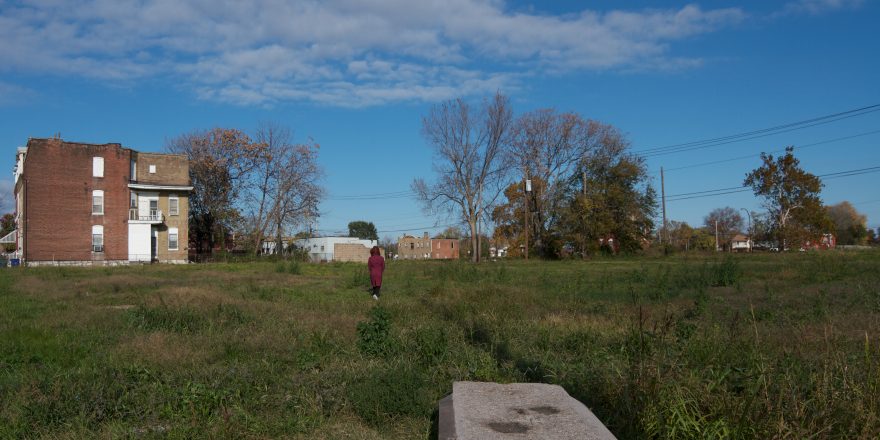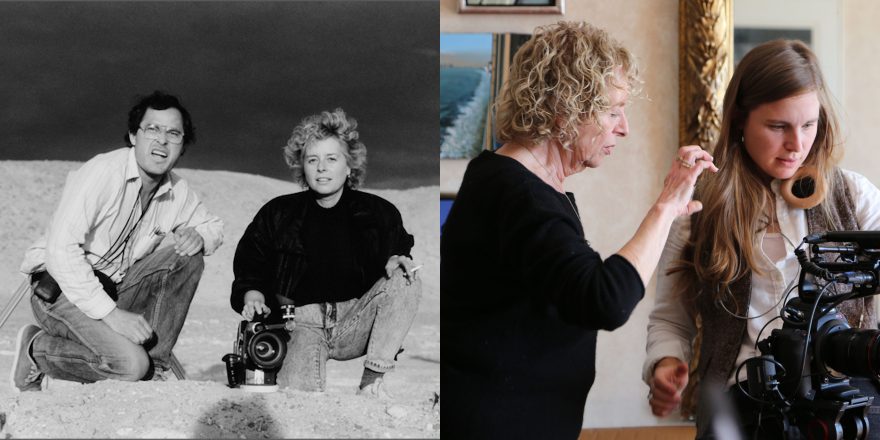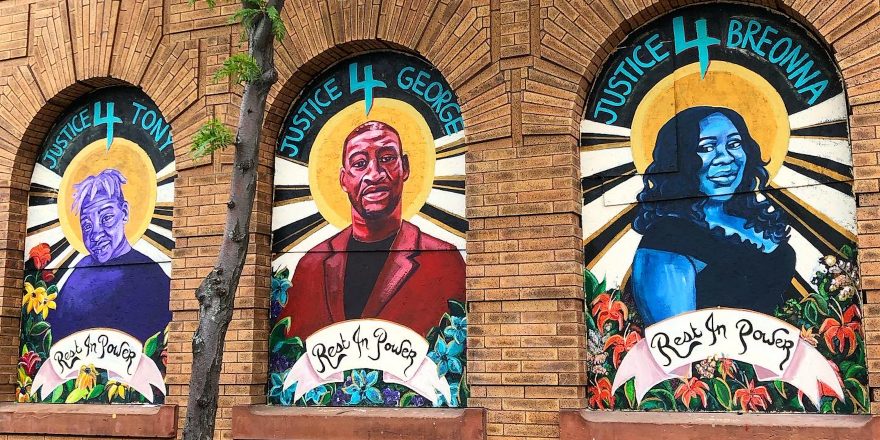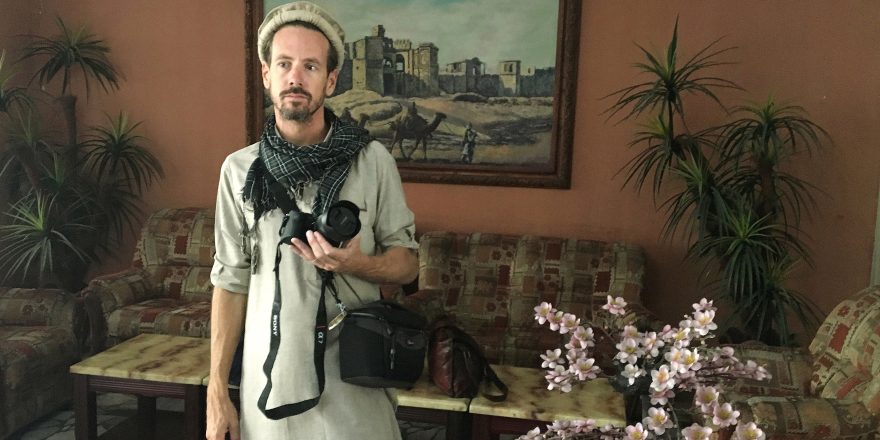I can pinpoint the exact moment when I decided to stop making films in the art world. I might even be able to track down the footage.
It was October 2014, in St. Louis. Which is to say, Ferguson October. I was making a short film commissioned for a solo show at the St. Louis Art Museum, as part of a fellowship/artist residency jointly sponsored by the museum and Washington University in St. Louis. I had, by prior arrangement, moved to St. Louis earlier that fall, just as the protests were kicking off, and I was teaching a month-long seminar for first-year MFA students who had also just moved to St. Louis.
If you were watching the Ferguson October protests from outside St. Louis, you may not have realized how continuous and omnipresent they were. Every day, at least one action was performed, somewhere in the city or county. Almost every day, a mirrored coffin created by a group of activist-artists¹ was carried to a different place before returning to the nightly vigils outside the Ferguson police department. During the massive rally downtown at the peak of the movement, the coffin was carried through most of the city streets, only occasionally visible through the sea of people and signs.

I had just arrived, and I had to start pre-production right away in order to finish shooting before I left again. This was a fairly typical experience in residencies. Thus, I typically had to do location scouting and casting before deciding what the film is even about – which did produce some fantastic films about places. I had three advantages in St. Louis: my collaborator Erin Ellen Kelly grew up in St. Louis; because of Erin, I’d been there twice before, and so I already knew that in St. Louis – as in Baltimore, where I grew up – spatial politics and racial politics are intimately intertwined. I had three massive disadvantages: I wasn’t from STL myself; a movement was being born as I was shooting, and I didn’t want to appropriate and aestheticize it; and I was working with a teeny-tiny art-world budget.

I found a way through most of the obstacles by constructing a loose adaptation of China Miéville’s novel The City & The City, which wraps an apparently science-fictional framework – the tale of a city that becomes so divided it splits into separate countries, whose citizens learn from birth to unsee each other – around real STL places and histories. The fictionalization and fantastic elements allowed a measure of distance from the present time and place of shooting that allowed the film to draw specific meanings from the STL context, but also resonated with my own formative experiences in Baltimore and in Kabul at the height of post-invasion Western intervention. I wrote an ambitious but not impossible shooting script, setting scenes and leaving details to improvisation. The budget was what ultimately tripped me up, as budgets so often do.
So: we were shooting on the North Side of St. Louis, in a neighborhood of scattered houses and vacant lots surrounding the wild forest that was once the Pruitt-Igoe housing project.² It was ferociously windy and there was no shelter around for blocks on either side. I had loaned my coat to our actress, Naomi, and was stamping my feet and rubbing my hands to keep warm, while Erin coached the talent through the next setup. For a moment, no one had a hand on the tripod, which promptly fell over, taking the camera with it, and irreparably cracking a brand-new wide-angle lens. We had to shut down for the day, find a lens rental place out in the county, drive out there, and ironically, rent the very wide-angle lens that I had sold (because of its annoying barrel distortion) and had replaced with the newer model that was now broken. I said to Erin in the car, “That’s it. I’m never making another film like this for less than $10,000.”
By “making another film like this,” I meant, “making a film whose ambition vastly outstrips the financial means available to realize it” as well as, “making a film on the fly, without any real pre-production or development time, meaning that you end up having to fix everything in post and risk drowning in a bitter pool of regret.”
Many factors brought me to this breaking point, of course. I’d lost a beloved Manfrotto tripod, with those special feet that dig into turf, when it was stolen from the Kabul airport a few years earlier, and I’d never replaced it. We’d rented a lightweight tripod for the shoot because we had no money to spare and always went for the cheapest option. We didn’t have enough money for a D.P. or even an A.C. on the shoot, and in fact I never had enough money for D.P.s on any projects in those days, and always ended up bitterly regretting it, because I felt like I couldn’t be director, producer, and D.P. effectively at the same time. We did have a P.A., one of my grad students, but she was running sound and also doubling as an actress in the film. We rarely had permits, insurance, extra drives, or extra days.

I felt like I’d spent years – and this was, in fact, true – asking people to do a lot for very little, and being asked to do the same in turn. (My long-running joke about one of my best-known installations is that I was trying to make Russian Ark with a garden hose, two paper clips and a wad of chewing gum.) Video art shoots are not unionized. No one gets paid properly, least of all the director – the model is that the artist gets paid when the work sells as an edition, one or two or five years later. Even when the work goes into a museum collection, as this film ultimately did, you may not be able to pay yourself back for all the free labor you put into making it. The opacity of art-world finances, combined with the niggling perception that art is not real work, allow all this to happen.
I don’t think I’m alone in saying that every time I make a film, I fall at least halfway in love with the place I make it, the people I make it with, the whole world it inhabits or constructs. How else could we spend months and years in the edit room, watching the footage until we know every frame by heart? I didn’t want to stop falling in love. I just wanted a healthier relationship.
So, that’s the beginning of the story of how I ended up making What We Left Unfinished, a feature-length documentary about unfinished Afghan Communist films (yes, there’s an Afghan cinema, and yes, there were Afghan Communists), now in U.S. theaters, for a shockingly small amount of money that was, nonetheless, more than $10,000. Obviously, I didn’t pay myself – some bad habits are hard to break. And I’m still making films in the art world after all, because there are aspects of that world that I value, and many people in it that I cherish. But I’m smuggling some of that film-union spirit with me, whenever I cross back.
^ ¹ I later met two of the people who made this astonishing, beautiful, and important piece of protest art (now in the Smithsonian), Derek Laney and De Nichols, and was fortunate to collaborate with Derek, who narrated the film I ultimately made in St. Louis, The City & The City.
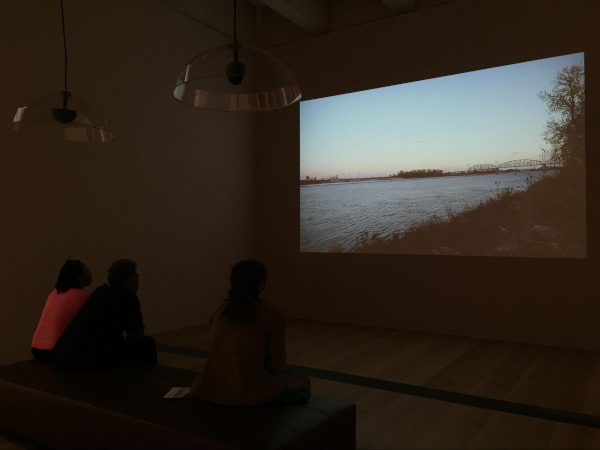
^ ² Because this shit never ends in St. Louis, the remaining houses in this neighborhood were subsequently seized by eminent domain, the forest was razed, and the entire area is now being turned into the new campus of the National Geospatial Agency, which runs satellite surveillance. In the bulldozing process, some of the original foundations, curbstones, and streetlamps from the Pruitt-Igoe housing project were unearthed.
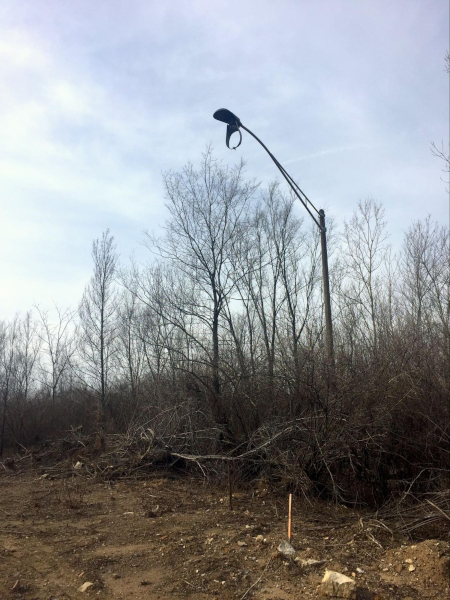
Featured image shows actor Naomi Merrihue during the shooting of The City & The City. All images courtesy Mariam Ghani.


